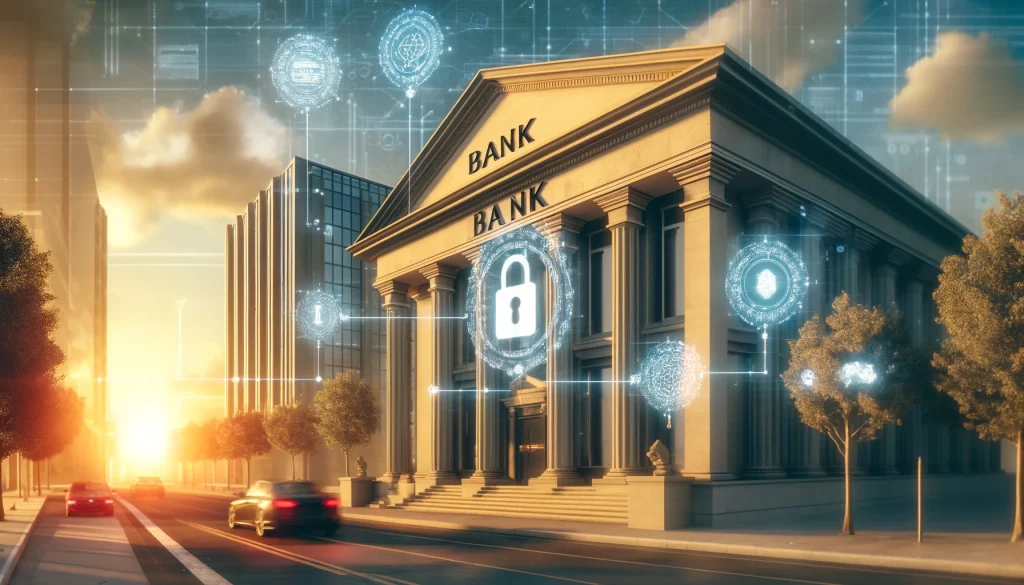One of the biggest concerns when conducting banking transactions has always been security, both for financial institutions and for customers. As fraud and digital attacks have grown, banks have been seeking solutions that bring more peace of mind and trust. That’s why blockchain is gaining strength as an efficient alternative to protect these transactions.
Thus, this technology, which was previously used only with cryptocurrencies, is being incorporated into American banking systems. But why? The goal is to offer transparency and resistance against malicious data alterations. Do you know what blockchain is and what is changing in the daily operations of institutions?
What is blockchain and why are banks investing in this technology?

Blockchain is a decentralized data structure, where its objective is to record each transaction in an immutable and transparent way. How so? Each time a new transaction is made, a new block is generated. It’s verified by a network, ensuring its veracity and resistance to fraud. In this way, there are no intermediaries, which reduces the risks of data manipulation.
As a result, banks understood that utilizing the technology would help increase trust in digital activity. Because of its decentralized nature, it lessens reliance on centralized servers that often face cyberattacks. With the promise of security, blockchain gave institutions the opportunity to reconsider how transactions were registered and verified.
Major American banks like JPMorgan Chase, Bank of America, and Wells Fargo have already started testing or implementing blockchain for areas such as international payments, identity authentication, and smart contracts. JPMorgan, for example, developed its own blockchain network, Liink, optimizing data and value transfers between banks.
How blockchain can protect your bank data
One of the points that this technology draws the most attention to for banks is its ability to ensure that the data registered cannot be altered. Let us explain how this works. Each time a transaction is validated, it receives a digital signature and is included in a block, which, in turn, is linked to the previous block. This generates a permanent and fully traceable chain, protected by advanced cryptography.
What shows the power of this system is its decentralized ability. Unlike legacy databases, which are stored on a centralized server and vulnerable to targeted attacks, blockchain is distributed-wide and uses a vast number of nodes.
The nodes are all continually checking any incoming data to verify that it is legitimate. They are working in collaboration to maintain a consistent and trustworthy ledger. This collaborative verification creates an environment where unauthorized changes essentially go unnoticed.
Thus, if an attempt is made to alter any data, it would have to be modified in all subsequent data, which would become impractical. This makes this network highly resistant to fraud, internal manipulation, or invasions, which brings more peace of mind and security for financial institutions and their customers.
Comparison: blockchain versus traditional security systems
| Feature | Traditional System | Blockchain |
|---|---|---|
| Storage | Centralized | Decentralized |
| Traceability | Limited | Fully transparent |
| Processing time | Hours or days | Minutes or seconds |
| Vulnerability to fraud | High, with risk of alteration | Very low, almost nonexistent |
| Authentication | Passwords and tokens | Public key cryptography |
This comparison makes it clearer why so many institutions are migrating to blockchain. Decentralization eliminates single points of failure, while advanced cryptography and transparency add an extra layer of protection. And the more protection they can offer their customers, the more loyal they will be.
What benefits does this technology offer?
For banks, this is one of the best technologies that has emerged in the market. By using blockchain, they eliminate the use of intermediaries in international transfer processes and document validation. How does this benefit them? It reduces operational fees, improves internal efficiency, and can still speed up customer service. An international payment, which previously took up to three days to be completed, is now done in minutes.
The transparency and security offered by blockchain make customers have more confidence in their financial institutions. Thus, they know that their information is more protected and that they can track the progress of operations more clearly.
In addition, greater process automation of smart contracts reduces manual processes, allowing for less customer waiting and less support calls, which also help customers access services efficiently. Efficient improvements affects the perception of banking quality, which will influence loyalty.
Challenges and perspectives for the future
Despite its various benefits, the inclusion of blockchain in US banks still faces challenges. This is because the regulation of this type of technology is more complex and varies from state to state. Thus, many banks are still awaiting guidelines on how to operate legally without compromising innovation.
In addition, there are technical issues involving integration with legacy systems, network scalability, and energy consumption. Although this last one is being mitigated with the use of more efficient blockchains, such as those based on proof-of-stake instead of proof-of-work.
The advancement of blockchain in the American banking sector seems inevitable. With the maturation of the technology and regulatory alignment, it is expected that more institutions will adopt blockchain-based solutions for various purposes—from identity authentication to asset financing.
The trend is that the American consumer will have more control over their data, greater agility in transactions, and financial services with less bureaucracy. In a competitive and digital scenario, banks that do not adapt to this new reality may lose space to fintechs and new 100% digital institutions.
Conclusion
The application of blockchain in US banks is not just a technological update—it’s a paradigm shift. The way transactions are registered, validated, and protected is being reinvented. And, although this process is still being applied gradually, the impacts are already visible in areas such as security, efficiency, and transparency.
As institutions embrace this technology, the American financial system becomes increasingly modern, resilient, and prepared to face digital challenges. For the consumer, this represents a new era of trust and control over their finances. For banks, the chance to lead a silent but profound revolution in their way of operating. If you want to stay updated on American banks, don’t miss the information on Agora na Mídia.



